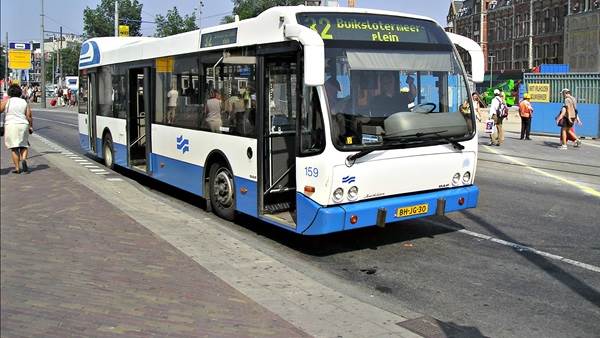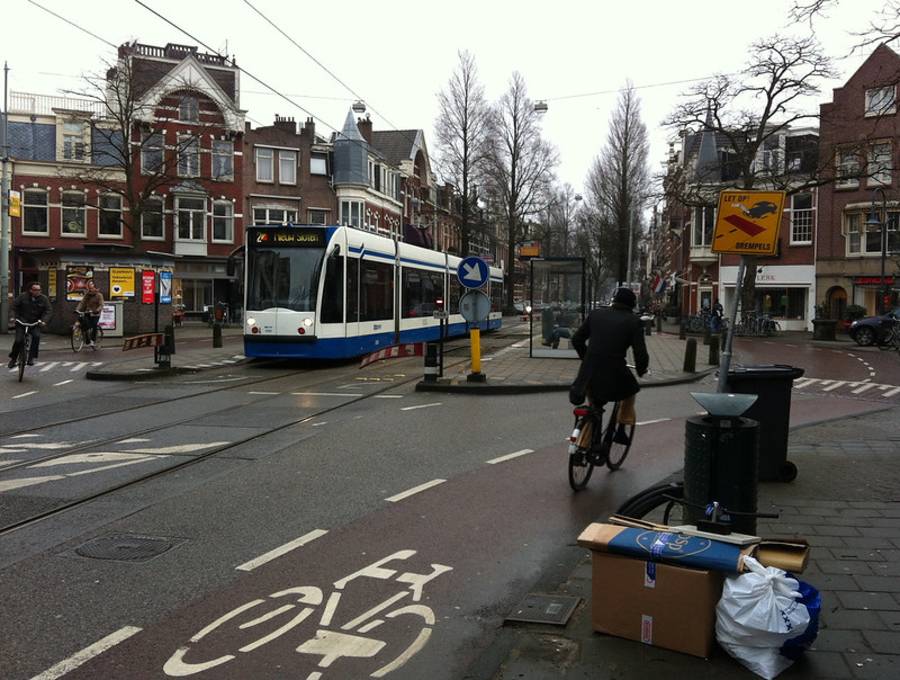Amsterdam Public Transport
Amsterdam Public Transport: Tips and Information
Those who follow our blog know that we usually run away from car rentals during our travels and rarely take a taxi. Our means of transport within big cities is public transport ( bus, metro, train, tram ) and in Amsterdam, it couldn’t be different, not least because public transport works very well. So, in this post we are going to talk about public transport in Amsterdam: how to use it, prices, and some additional tips so you don’t have any surprises during your trip.
Public Transport in Amsterdam
As we said earlier, public transport in Amsterdam works very well, especially when compared to some places in Latin America.
The big company that operates public transport in Amsterdam is GVB, which has the city’s famous electric trams, meters, buses, and ferries. The company Connexxion is much smaller and operates only a few bus lines, including the one that leaves from the airport to the center of Amsterdam ( see our post indicating how to take this bus ). There is also the NS that operates the intercity trains and you will use it if you move to a place a little further away or even if you choose the train as transport between Schiphol Airport and the center of Amsterdam.
With the exception of the train that we took from Schiphol Airport to the center of Amsterdam (operated by NS), all of our transportation within the city of Amsterdam was done through electric trams (trams) that cover most of the city’s attractions. Thus, in this post, we will focus on this type of transport that will be the most used by those who visit the city.
How to Use Public Transport in Amsterdam: Trams
The team will be the transport you will most use in Amsterdam as it leaves you in most of the city’s attractions. Below you will find a simplified map of the tram network in the central region of Amsterdam:

The points where the trams stop are well identified and they are usually located at the center of a street. There is no need to signal the tram to stop as it stops at all points following a predetermined time. So, except when there is a problem, they are punctual and you can see the time for the next tram to arrive at the electronic panel located at the points.
The path that tram takes on the way out is the same path he takes on the way back. Thus, if tram 16 passes on your street (as was our case when we stayed at the Albus Hotel ), the 16 will pass both in the center direction (Amsterdam Centraal Station) and in the neighborhood direction.
When the tram stops at the point you need to observe the entry direction as the doors have different directions. In some, it is only possible to get in (like the driver’s) and in others, it is only possible to get out (the last door). Intermediate doors can be double-ended or can be exit only. Anyway, on the door, there is an identification of prohibited or allowed sense. After seeing the entrance door, you must press the button for the door to open or it will open automatically if someone inside the tram has already pressed the button.
From the moment you enter the tram, you have to pay for transportation that can be done in two ways: pass card (daily or rechargeable) or disposable card. The first is the easiest and most economical and in the next topic, we will talk about the types of passes available. Most people will use the passcard (daily or rechargeable) and, if applicable, as soon as you enter the tram you need to check in by touching your pass card to the reader. Likewise, you must check out when you leave the tram. For those who use the transport only once and decide to use the disposable card, you can buy directly from the driver or the collector and your disposable card will be valid for one hour.
Although you do not have control over passengers entering and leaving, do not try to be smart and leave without paying. The fine for those caught is 35 Euros plus the value of the ticket.
Public Transport in Amsterdam: Types of Passes
As we said earlier, there are three main types of cards that can be used for public transport in Amsterdam: disposable pass card, daily pass card, and rechargeable pass card. Your decision must be made based on the number of days you will be staying in the city and how much you will use public transport. Although the post is more focused on those using trams, these passes are also valid for GVB bus and metro transportation (does not include Connexxion and NS).
- Disposable Card: this is the most common and can be purchased directly from the trams. The unit cost is 2.90 Euros (the price is January / 2015 reference) and is valid for one hour of travel. We think the unit price is very expensive and is only worth it if you are going to use very little public transport in Amsterdam or are just passing through the city.
- Daily Pass Card: this is an unlimited card that is valid for a certain number of days. The most basic is the 24 hour one, which costs 7.50 Euros, but there is also the 48 hours one (12 Euros), 72 hours (16.50 Euros), and even longer ones like the 168 hours one (prices are reference January / 2015). An advantage of using this type of card is that it is valid for the number of hours, that is, if you start using the card at 11 pm on one day it will be valid until 11 pm on the next day. You can consult all daily pass cards on the official GVB website. In our opinion, this is the best option for anyone visiting the city.
- Rechargeable Pass Card: this card is best for those who will be staying in the city for a long time. There are two types of rechargeable cards: anonymous and identified. In both, you need to pay 7.50 Euros only for the card plus the transportation fee which depends on the distance traveled, the anonymous card being more expensive than the rechargeable card. If you want to fully understand how this system works and how the tariff is calculated for both cases, we recommend reading the Ducs Amsterdam blog.
- I Amsterdam City Card: for those who want to use public transport and still have free entry to several attractions in the city, a good option is to buy the I Amsterdam City Card. There are 3 options for I Amsterdam City Card: 24 hours, 48 hours, and 72 hours. The card that comes on the I Amsterdam City Card is the daily pass card and the amount of hours is equivalent to the number of hours on your I Amsterdam City Card. For example, if you purchased the 48-hour I Amsterdam City Card, your daily pass card will be 48 hours. See more information about the I Amsterdam City Card here.
Where to Buy the Public Transport Pass in Amsterdam
There are several locations where you can buy your pass card: GVB machines at Amsterdam stations, Tobacco shops, supermarkets, and within some trams there is also the possibility to buy. However, the easiest way is to go to a store at GVB where you will find all kinds of passes there and also more information about public transport in Amsterdam.
More information
Official GVB website: http://en.gvb.nl/



